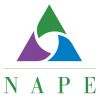© Copyright 2023. All rights reserved.
False Start Report
A Missed Opportunity for Women and Girls in Science, Technology, Engineering, and Mathematics in the Race to the Top Awards
National Alliance for Partnerships in Equity
March 2011
Executive Summary
The National Alliance for Partnerships in Equity (NAPE) is a national, nonprofit consortium that collaborates to create equitable and diverse classrooms and workplaces. Through its Education Foundation, NAPE has been involved in the STEM Equity Pipeline Project, which works with educational systems to implement research-based approaches to increase the participation of underrepresented populations in science, technology, engineering, and math (STEM) education.
In 2010, NAPE joined forces with the National Girls Collaborative Project (NGCP) and Multinational Development of Women in Technology (MDWIT) to develop recommendations related to the third priority of the Educate to Innovate campaign, that is, to “expand STEM education and career opportunities for underrepresented groups, including women and girls.” A similar priority was also integrated into the U.S. Department of Education’s Race to the Top (RTTT) competitive grant program. Specifically, in its application for RTTT funds, a state was expected to demonstrate high-quality plans to (i) offer a rigorous course of study in STEM; (ii) cooperate with community partners to assist teachers in various initiatives; and (iii) prepare more students for advanced study and careers in STEM, including underrepresented groups and women and girls. As part of its work with NGCP and MDWIT, NAPE agreed to research the quality of the states’ responses to criterion iii and the reviewers’ scoring of the overall priority.
NAPE reached the overall conclusion that criterion iii was misunderstood. Applications ranged from not addressing the criterion to describing programs that are showing impressive results. Reviewers also differed in their interpretation of the degree to which an applicant needed to prove its capacity to increase the access and success of underrepresented students in STEM. It appears as though the instructions and training provided to reviewers for scoring the Priority were not sufficient to result in a consistent scoring response. Therefore, the individual reviewer’s opinions about the adequacy, or even the necessity, of addressing criterion iii may have affected the scoring outcome. In addition, NAPE was disappointed that the review revealed inadequate responses to criterion iii and the general use of programs serving all students as meeting the needs of underrepresented students, a notion not supported by research.
In undertaking this project, NAPE’s goal was to assist the Department of Education in its review of its competitive grants programs. To this end, NAPE presents the following recommendations for the Department’s consideration:
- Provide clear instructions for reviewers about how to score applications, especially when scoring criteria for which there is no commonly held standard or when there is an opportunity for reviewer bias, explicit or implicit, to influence the review.
- If a priority involves multiple criteria but “all or nothing” scoring, then remind reviewers that the applicant must satisfy all criteria to earn points and require written evidence that the reviewer considered all criteria.
- Use current research to clearly articulate the types of programs that reviewers should be looking for when reviewing programs designed for underrepresented groups.
- Select reviewers with expertise in research and program development that have successfully increased the access and success of underrepresented groups in STEM.
- Have specialists review and score priority sections of an application.
- Continue to include in all future funding opportunities a priority for increasing the access and success of underrepresented groups, specifically women and girls, in STEM education and careers.

